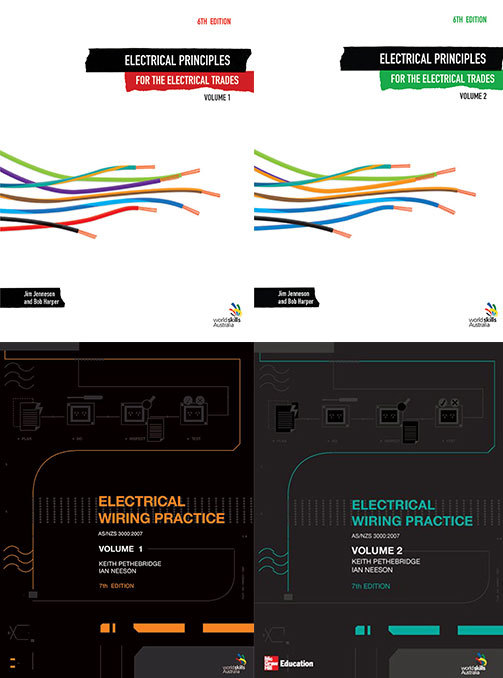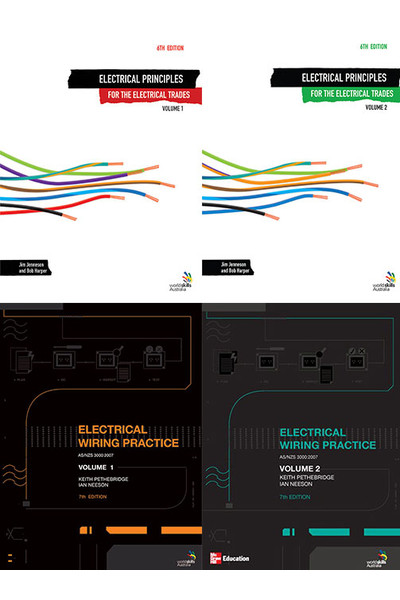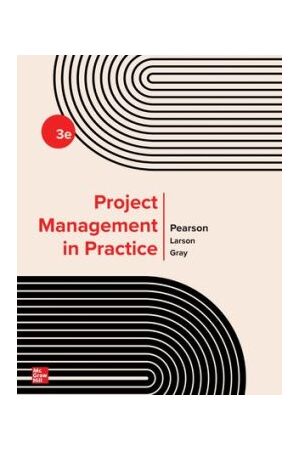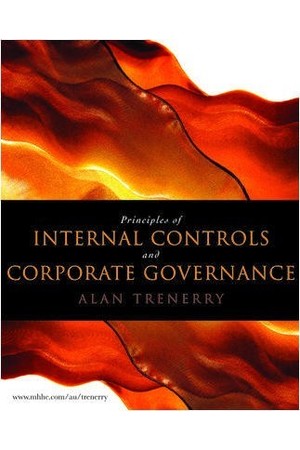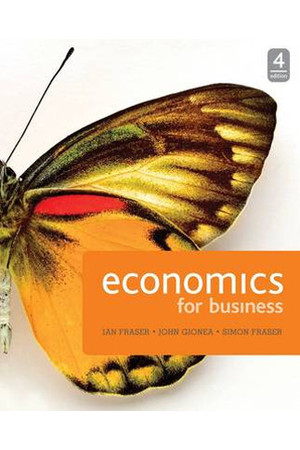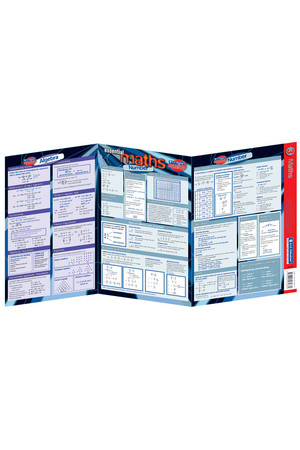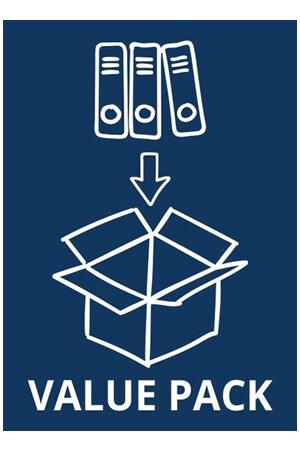Part of the series Electrical Principles for the Electrical Trades 6th Edition.
View all products in this series
Electrical Principles for the Electrical Trades
Electrical Principles for the Electrical Trades is now enhanced with McGraw-Hill Education's unique Connect and Connect Plus to provide a complete blended learning solution for Electrical students. This volume presents knowledge and skills specified in units of competency in national training packages for an electrical trade qualification and advanced trade competencies.
Taking on a more practical approach, Electrical Principles for the Electrical Trades now provides students with a range of additional online materials that goes beyond the one-dimensional user experience. This volume is an ideal learning resource for students and trade professionals willing to keep abreast of new developments in Electrotechnology.
Electrical Principles for the Electrical Trades 6th Edition provides a logical learning pathway for Certificate II and III in Electrotechnology in the UEE11 Electrotechnology Training Package. These two volumes are the ideal resource for apprentice and non-apprentice trainees as well as practising tradespeople. This text provides students with the fundamental knowledge needed for a career in the electrical trades.
View Competency Grid
Presented in two volumes, Volume 1 covers electrical principles and Volume 2 covers electrical machines. The combination of a clear, simple writing style with full-colour diagrams and photographs make these accessible and engaing to all students and professionals.
Features
- Blended learning and teaching options
- Concise full-colour diagrams and photographs illustrate key concepts
- Appropriate language level for student demographic
- Coverage of Cert II and Cert III Electrotechnology courses mapped to the competencies
- Video animations ensure students can easily engage with examples and readings
- Worksheets, interactive quizzes and testbanks maximise student understanding
- Extensive end-of-chapter summaries and review questions ensure retention of presented theory
- Revised and updated to incorporate relevant competencies in UEE07 Electrotechnology Training Package
- Attractive and engaging new four-colour design
- A wealth of diagrams, photographs, graphs and figures to clearly illustrate key concepts
- Student-friendly writing style demonstrates the logical flow from simple to complex theories
- Revised and updated exercises and examples allow students to assess their understanding of the material
- Appendix material expands on key concepts and creates an authoritative and up-to-date text perfect for VET students and as a reference for trades professionals
- Ideal companion text to Electrical Wiring Practice 7th Edition Volume 1 & Volume 2
Contents
Volume 1
- 1 ELEMENTARY ELECTRICITY
- 1.1 Introduction
- 1.2 Natural electricity
- 1.3 The structure of matter
- 1.4 Static electricity
- 1.5 Dynamic electricity
- 1.6 Potential difference
- 1.7 Electrical materials
- 1.8 Measuring electricity – units
- 1.9 Ohm’s Law
- 1.10 Electrical power and energy
- 1.11 Electrical components
- 1.12 Effects of electricity
- 1.13 Electricity and heat
- 2 ELECTROCHEMISTRY
- 2.1 Introduction
- 2.2 Electrochemical energy sources
- 2.3 Voltaic cells
- 2.4 Electrochemical manufacturing processes
- 2.5 Faraday’s laws
- 2.6 Electrolytic corrosion
- 3 MAGNETISM
- 3.1 Magnetism
- 3.2 Natural magnets
- 3.3 Magnetic characteristics
- 3.4 Electromagnetism
- 3.5 Magnetic units
- 3.6 Magnetisation curves
- 3.7 Magnetic hysteresis
- 3.8 Electromagnetic relay switches
- 4 DC CIRCUITS
- 4.1 Parts of electric circuits
- 4.2 Circuit types
- 4.3 Simple circuit analysis
- 4.4 Series circuit analysis
- 4.5 Parallel circuit analysis
- 4.6 Compound circuit analysis
- 4.7 Circuit analysis
- 5 RESISTORS
- 5.1 Factors affecting resistance
- 5.2 Effects of conductor resistance
- 5.3 Resistor types
- 5.4 Non-linear resistors
- 6 INDUCTORS
- 6.1 Inductors
- 6.2 Generation of an EMF in a magnetic field
- 6.3 Lenz’s Law
- 6.4 Inductance
- 6.5 Inductors in direct current
- 6.6 Inductor types
- 6.7 Applications of inductors
- 6.8 Inductor faults
- 6.9 Testing inductors
- 7 CAPACITORS
- 7.1 Introduction
- 7.2 Capacitance
- 7.3 Capacitors in direct current
- 7.4 Capacitor types
- 7.5 Capacitor faults
- 7.6 Testing capacitors
- 8 SINGLE-PHASE ALTERNATING CURRENT
- 8.1 Introduction
- 8.2 Alternating current generation
- 8.3 Alternators
- 8.4 Parameters that affect the generated EMF
- 8.5 Iron losses in ac generators
- 8.6 Generating sinusoidal waveforms
- 8.7 Voltage and current cycles
- 8.8 Construction of sinusoidal curves
- 8.9 Sinusoidal wave values
- 8.10 Phasors
- 8.11 Harmonics
- 9 ALTERNATING CURRENT CIRCUITS
- 9.1 Introduction
- 9.2 Resistance in ac circuits
- 9.3 Inductance in ac circuits
- 9.4 Capacitors in ac circuits
- 9.5 Series R–L–C circuits on ac current
- 9.6 Parallel R–L–C circuits on ac current
- 9.7 Power in ac circuits
- 9.8 Resonance
- 10 THREE-PHASE ALTERNATING CURRENT
- 10.1 Efficiency in generation and distribution
- 10.2 Power efficiency and number of phases
- 10.3 Two-phase systems
- 10.4 Three-phase systems
- 10.5 Three-phase sine-wave construction
- 10.6 Three-phase connections
- 10.7 Power transmission
- 10.8 Three-phase power
- 10.9 Methods of three-phase power measurement
- 10.10 Volt-Ampere Reactive (VAR) measurement
- 11 CELLS AND BATTERIES
- 11.1 Cell and battery construction
- 11.2 Cell and battery parameters
- 11.3 Safety precautions
- 11.4 Battery maintenance
- 11.5 Primary cells and batteries
- 11.6 Secondary cells and batteries
- 11.7 Fuel cells
- 11.8 Solar, standby power supplies and UPS
- AUXILIARY CHAPTER: TOOLS AND RESOURCES
- T&R.1 Mathematics, numbers and units
- T&R.2 SI units (Système Internationale d’Unités)
- T&R.2.1 Base units
- T&R.3 SI derived units
- T&R.4 Transposition
- T&R.5 Energy, work and power
- T&R.6 Scalar and vector quantities
- T&R.7 Trigonometry
Volume 2
- 1 ELECTROMAGNETIC FORCE
- 1.1 Electromagnetic force
- 1.2 Magnetic circuits
- 1.3 Solenoids
- 1.4 Electromagnet applications
- 1.5 Relays and contactors
- 2 TRANSFORMERS
- 2.1 Operating principle
- 2.2 Transformation ratios
- 2.3 Transformer losses
- 2.4 Transformer construction
- 2.5 Transformer ratings
- 2.6 Transformer cooling
- 2.7 Winding polarities
- 2.8 Parallel connection of transformers
- 2.9 Special transformers
- 3 ELECTRIC MACHINES
- 3.1 Mechanics of electric machines
- 3.2 Terminals
- 3.3 Noise abatement
- 3.4 disassembly—reassembly
- 3.5 Mechanical efficiency
- 4 DC MACHINES
- 4.1 Construction
- 4.2 Commutation
- 4.3 Armature reaction
- 4.4 DC generators
- 4.5 DC Motors
- 4.6 Effi ciency of DC machines
- 4.7 DC servo-motors
- 4.8 DC stepper motors
- 4.9 BLDC motors
- 4.10 Electronically commutated motors (ECM)
- 5 3Ø MOTORS
- 5.1 Construction
- 5.2 Linear motors
- 5.3 Rotating fields
- 5.4 Induction and rotors
- 5.5 Rotor types
- 5.6 Abnormal operating conditions for three-phase motors
- 5.7 Fault diagnosis in 3Ø Motors
- 5.8 Speed/load/torque
- 5.9 Abnormal operating conditions ofthree- phase motors
- 5.10 Diagnosis of faults
- 6 SINGLE-PHASE MOTORS
- 6.1 Operating principles
- 6.2 Induction and its effects
- 6.3 Operating characteristics
- 6.4 Single-phase induction motors
- 6.5 Summary of ac-motors (table)
- 6.6 Comparison of single-phase and three-phase motors
- 6.7 Abnormal operating conditions for ac-motors
- 6.8 Alternating current motor starter circuits
- 6.9 Motor maintenance
- 6.10 Summary Comparison of single-phase motors
- 7 SYNCHRONOUS MACHINES
- 7.1 Three-phase alternator construction
- 7.2 Parallel operation of alternators: synchronising
- 7.3 Standby power supplies
- 7.4 Three-phase synchronous motors
- 7.5 Single-phase synchronous motors
- 8 ELECTRIC MOTOR CONTROL
- 8.0 Motor starters
- 8.1 Three-phase motor reversal
- 8.2 Three-phase motor braking
- 8.3 Three-phase motor starters
- 8.4 Speed control of a.c. induction motors
- 8.5 Alternating current motor protection
- 8.6 Starting principles of direct current motors
- 8.7 Direct current motor reversal
- 8.8 Direct current motor braking
- 8.9 Speed control of d.c. motors
- 8.10 Direct current motor protection
- 8.11 Basic concepts of static and logic control
- 9 ELECTRIC MOTOR PROTECTION
- 9.1 Motor protection
- 10 POWER CONTROL DEVICES
- 10.1 Power control methods
- 10.2 Silicon controlled rectifiers
- 10.3 Gate turn-off (GTO) thyristor
- 10.4 Triacs
- 10.5 Unijunction transistors (UJT)
- 10.6 Programmable unijunction transistor
- 10.7 Diacs
- 10.8 Thyristor phase control
- 10.9 Trigger circuit isolation
- 10.10 Alternating current load control with triacs
- 10.11 Alternating current load control with SCRs
- 10.12 Zero voltage switching
- 10.13 Solid state relays (SSRs)
- 10.14 Fault finding in thysristor circuits
- 11 TEST EQUIPMENT
- 11.1 Circuit indicators
- 11.2 Non-contact testing equipment
- 11.3 Analogue instruments
- 11.4 Digital instruments
- 11.5 Voltmeters
- 11.6 Ammeters
- 11.7 Resistance meters
- 11.8 Analogue multimeters
- 11.9 Digital multimeters
- 11.10 Power and energy meters
- 11.11 Oscilloscope
- 11.12 Use, selection and care of instruments
- 12 ELECTRICAL DRAWINGS AND CIRCUIT DEVELOPMENT
- 12.1 Circuit diagrams
- 12.2 Conventions in line work
- 12.3 Symbols used in electrical circuit diagrams
- 12.4 Placement of circuit components
- 12.5 Drawing schematic circuit diagrams
- 12.6 Other circuit representations
- 12.7 Contactors and relays
- 12.8 Control circuit variations
View Sample Chapters
Electrical Wiring Practice
Looking for a blended digital solution? Get Connect! Connect is an online resource hosting an abundance of interactive learning tools to create the ultimate learning experience for your students. Electrical Wiring Practice is now enhanced with McGraw-Hill Education's unique Connect and Connect Plus to provide a complete blended learning solution for Electrical students.
The 7th edition of Electrical Wiring Practice has been thoroughly updated to provide guidance in the use of the Australian and New Zealand Wiring Rules AS/NZS 3000:2007, including the 2009 Amendments and other related standards. This text presents the knowledge and skills specified in units of competency in national training packages for an electrical trade qualification and advanced trade competencies.
Taking on a more practical approach, Electrical Wiring Practice now provides students with a range of additional online materials that goes beyond the one-dimensional user experience. This volume is an ideal learning resource for students and trade professionals willing to keep abreast of new developments in Electrotechnology. Although the book is primarily written for students and teachers of electrical trades, it provides up-to-date reference material that will be helpful to many trade professionals.
Features
- Blended learning and teaching options
- Clear full-colour diagrams and photographs illustrate key concepts
- Appropriate language level for student demographic
- Coverage of Cert II and Cert III Electrotechnology courses mapped to the competencies
- Video animations ensure students can easily engage with examples and readings
- Worksheets, interactive questions and testbanks maximise student understanding
- Extensive end-of-chapter summaries and review questions ensure retention of presented theory
- Rewrites and revisions incorporating AS/NZS 3000:2007
- The move from prescriptive methods of practice to recommended methods, in line with the new standards
- Practical applications of the Wiring Rules and related standards
- Updated figures - many of the graphics and photographs throughout the text have been updated to reflect the changes in practices and equipment
- New design features - information boxes, practical examples and student exercises
Contents
Volume 1
- Chapter 1. Electrical energy—past, present and future
- A brief history of electrical energy production and supply
- Modern generation methods
- Renewable energy and sustainable energy practices
- Electricity transmission and distribution systems
- Distribution of electricity to consumers
- Distribution of electricity in the consumer’s installation
- Chapter 2. Workplace and electrical safety
- Occupational/workplace health and safety
- Workplace hazards and risk control measures
- Safety of electrical installations and equipment
- Hazards of working with electricity
- Electrical accidents
- Chapter 3. Regulations and standards
- Electrical licensing
- Standards
- Format of the Wiring Rules AS/NZS 3000:2007
- Using the Wiring Rules
- Wiring Rules—Clause 1.4 Definitions
- Fundamental requirements (Wiring Rules Part 1)
- Insulating materials
- Chapter 4. Cables, connections and terminations
- Conductors and cables
- Types of cable insulation
- Power cable classification
- Power cable types and applications
- Power cable termination and conductor connection methods
- Data and communication cable types and applications
- Chapter 5. Fixing methods and accessories for electrical and data communication installations
- Accessories for fixing and support
- Mounting brackets, plates and boxes
- General switching, lighting and socket-outlet accessories
- Accessories for specific situations
- Data and communication accessories
- Chapter 6. Drawings, diagrams, schedules and documents used in electrical work
- Series and parallel circuits in wiring
- Electrical circuits and wiring diagrams
- Circuits in general wiring
- Undertaking electrical work
- Working with specifications, schedules and drawings
- Chapter 7. Wiring and cabling systems
- Wiring and cable routes through buildings and structures
- Wiring and cabling systems
- Installing wiring systems
- Enclosed wiring and cables
- Underground systems
- Aerial and catenary systems
- Composite wiring systems and applications
- Chapter 8. Protection—earthing and protective methods
- Reasons for and earthing system
- Earthing systems
- MEN earthing system
- Earth faults
- Earthing system—selection and installation
- Other protective methods
- Chapter 9. Testing techniques and compliance verification
- Testing safety
- Testing principles
- Testing devices
- Verification and compliance
- Fault finding and performance testing
Volume 2
- Chapter 10. Electrical protection and protective devices
- Protection against overcurrent
- Overcurrent protective devices
- Protection against indirect contact with live parts
- Residual current devices
- Protection against overvoltage
- Selection and arrangement of protective devices
- Chapter 11. Installation of safety services
- Extent of safety services
- Standards and regulations
- Safety services electrical equipment
- Installation arrangements
- Chapter 12. Renewable energy and other alternative electrical supply installations
- Renewable energy sources within a consumer’s installation
- Stand-alone and grid connection arrangements
- Uninterruptible power supplies
- Standby and stand-alone generators
- Chapter 13. Switchboards and control panels
- Compliance requirements for switchboards
- Switchboards used in installations with lower demand
- Switchboards for larger installations
- Metering and service equipment
- Larger installations – metering, service and power quality equipment
- Control panels
- Chapter 14. Installation design – selection of cables and protective devices
- Factors affecting installation design
- Maximum demand in consumer’s mains and submains
- Arranging an electrical installation into circuits
- Factors affecting cable selection
- Cable selection standards
- Current-carrying capacity and co-ordination between cables and the protective device
- Selection of minimum cable size based on current-carrying capacity
- Selection of minimum cable size based on voltage drop and fault-loop impedance limitations
- Short-circuit performance of cables
- Chapter 15. Special electrical installations
- Damp situations
- Construction sites
- Areas in which electromedical equipment is used
- Installation for recreation areas and equipment
- Hazardous areas
- High voltage installations
- Chapter 16. Appliances – electric heating and motors
- Principles of heating control
- Water heating
- Space heating
- Process heating
- Commercial and domestic kitchen equipment
- Motor types and applications
- Motors – installation requirements
- Chapter 17. Lighting sources and applications
- Basic principles, terminology, units
- Change world of lighting
- Lighting source – past, present and future
- Comparison of light sources
- Luminaires and ancillary equipment
- Maintenance of luminaires
- Elementary lighting design
- Lighting control
- Chapter 18. Control and energy management
- Control systems
- Human-machine interface devices
- Field devices
- Relay control
- Programmable devices
- Energy management
- Integrated control systems
- Wiring for sustainability
View Sample Chapters
Volume 1
Volume 2
| ISBN | 9781743075500 |
| Publisher | McGraw-Hill Education |
| Product Type | Student Books, Bundles & Packs, |
| Year Level | VET, |
Be The First To Review This Product!
Help other Teacher Superstore users shop smarter by writing reviews for products you have purchased.


